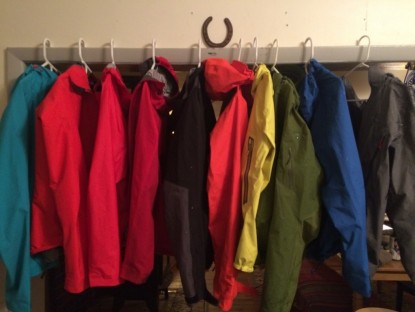Columbia Compounder Review
Our Verdict
Our Analysis and Test Results
The Compounder is the only shell we tested that uses Columbia's Omni-Dry waterproof breathable technology. We were unable to discern any real world difference between Omni-Dry's breathability and that of Mountain Hardwear's Dry Q Elite, and Gore-Tex Active Shell.
It's important to note that while an air-permeable membrane may be more breathable than a non-porous membrane (Gore-Tex), it won't be as warm. Air passes through the membrane. Like mesh netting, but with much finer holes. There, hot air, which may contain moisture, can exit through the membrane and cold air can enter. Because strong winds can force cold air through the jacket, air-permeable membranes are definitely not as warm as non-porous membranes. We prefer air-permeable membranes for high output activities, but not for low exertion activities in high winds. Any type of Gore-Tex, therefore, is more versatile than Omni-Dry.
The Compounder's features are an odd mix of those found on hiking and expedition hardshells. We believe the jacket was designed more to meet the on paper specification of undereducated consumers than for any specific end use. For example, its hand pockets are set low on the hips and are covered by a backpack's waistbelt, which renders them useless. The Compounder also has large internal mesh storage pockets — a feature occasionally found on bomber mountaineering shells and, more commonly, on heavy duty synthetic insulated jackets (you want to keep things warm, not just dry). Another complaint lies with the Compounder's pit zips. There shouldn't be any! Omni-Dry is “highly breathable” and “extremely air permeable,” and therefore doesn't need pit zips. Even worse, it's the only jacket that has storm flaps that cover the pit zips (watertight seals are better). Also, its hood adjustments are rudimentary and unreliable. See below photo.
The best thing about the jacket is its low price. At $300 the Compounder is the cheapest shell we tested. We suggest, instead, the L.L. Bean Ascent because it's more durable and has slightly better features.
FROM COLUMBIA'S WEBSITE:"Big time big mountain protection in a low-profile shell that packs easily and weighs next to nothing."
Did the product copy writer ever use the shell? It weighs almost twice as much as the Mountain Hardwear Quasar!





